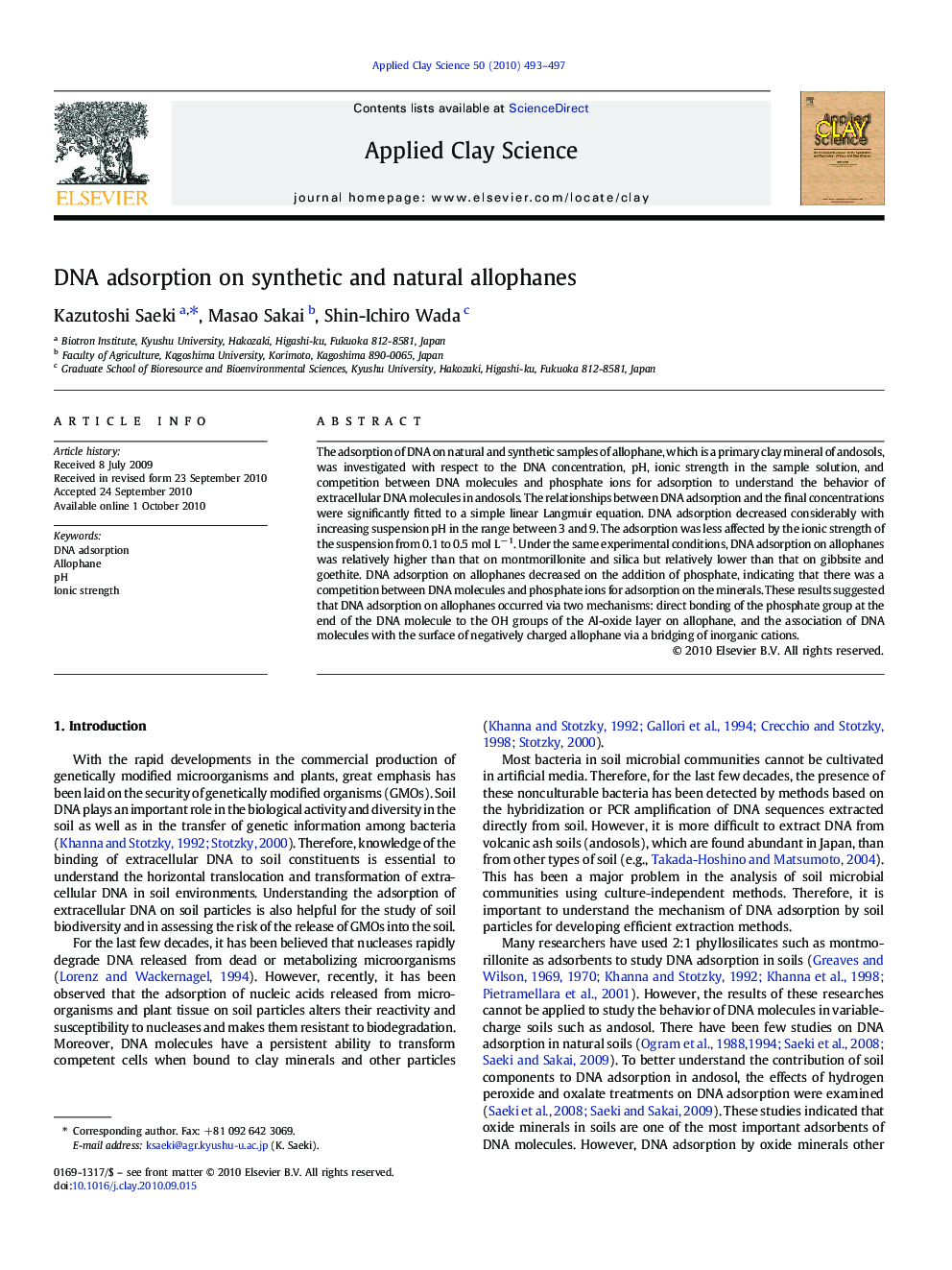| Article ID | Journal | Published Year | Pages | File Type |
|---|---|---|---|---|
| 1695547 | Applied Clay Science | 2010 | 5 Pages |
The adsorption of DNA on natural and synthetic samples of allophane, which is a primary clay mineral of andosols, was investigated with respect to the DNA concentration, pH, ionic strength in the sample solution, and competition between DNA molecules and phosphate ions for adsorption to understand the behavior of extracellular DNA molecules in andosols. The relationships between DNA adsorption and the final concentrations were significantly fitted to a simple linear Langmuir equation. DNA adsorption decreased considerably with increasing suspension pH in the range between 3 and 9. The adsorption was less affected by the ionic strength of the suspension from 0.1 to 0.5 mol L− 1. Under the same experimental conditions, DNA adsorption on allophanes was relatively higher than that on montmorillonite and silica but relatively lower than that on gibbsite and goethite. DNA adsorption on allophanes decreased on the addition of phosphate, indicating that there was a competition between DNA molecules and phosphate ions for adsorption on the minerals. These results suggested that DNA adsorption on allophanes occurred via two mechanisms: direct bonding of the phosphate group at the end of the DNA molecule to the OH groups of the Al-oxide layer on allophane, and the association of DNA molecules with the surface of negatively charged allophane via a bridging of inorganic cations.
Research Highlights► DNA adsorption by allophanes decreased considerably with increasing suspension pH. ► The adsorption was less affected by ionic strength of suspension (0.1 – 0.5 mol L–1). ► DNA adsorption on allophanes was higher than silica but lower than gibbsite and goethite. ► There was a competition between DNA molecules and phosphate ions for adsorption.
